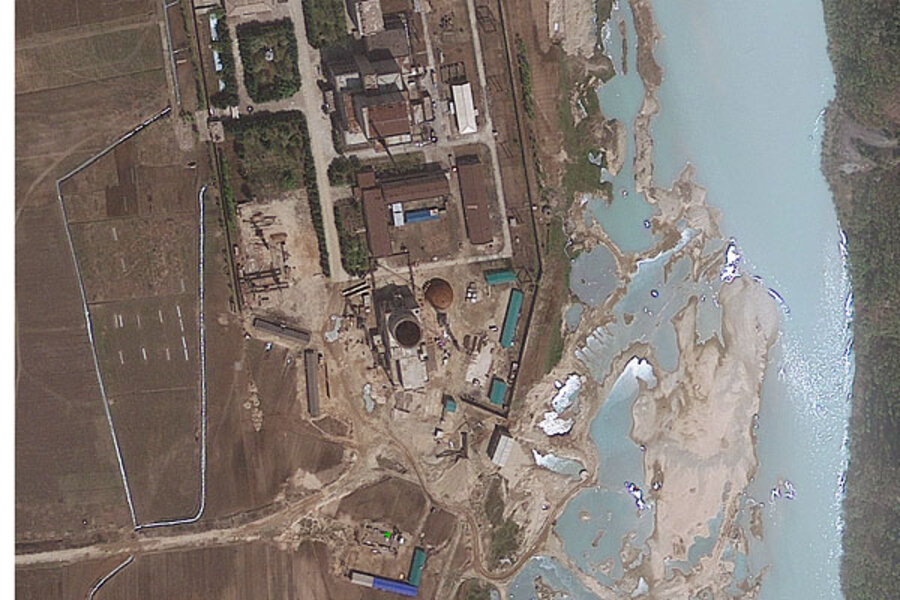North Korea almost done building new reactor. Is that a big deal?
Loading...
Is North Korea almost done building a new, experimental light water reactor at its Yongbyon nuclear facility? Two well-known US nonproliferation experts think that’s the case. In an analysis of commercial satellite imagery posted at the North Korea-centered blog 38 North, Jeffrey Lewis of the James Martin Center for Nonproliferation Studies and Nick Hansen of Stanford University conclude that Pyongyang “is in the final ‘clean up’ stage of construction at the reactor site.”
Overhead photos show North Korean workers put a dome over the reactor containment building last year. They started moving large equipment into the building in the fall.
Pipes for a cooling system that draws water from a nearby river have been put in trenches and covered up, according to Mr. Lewis and Mr. Hansen. A nearby electrical sub-station is close to ready. The site’s large crane has been dismantled and taken away. Workers haven’t yet made final electrical and water connections.
The key now is whether a nearby uranium enrichment facility has produced fissile material that North Korea has managed to fabricate into fuel rods.
“If the North has solved these problems and fuel is indeed available, the facility could begin a start-up period by mid-2013 that precedes the facility becoming fully operational,” Lewis and Hansen write.
Would this be a big deal?
Yes. First, let’s back up a bit and provide background. Earlier this year, North Korea announced that it would restart a shuttered 5 MWe gas graphite reactor at Yongbyon, some 55 miles north of Pyongyang. That’s a different plant than the one Lewis and Hansen analyze in their post.
The gas graphite reactor was shuttered in 2007 per international disarmament talks, which have since stalled. US experts believe it produced the plutonium that North Korea has used to fashion a small arsenal of nuclear devices. Stanford University nuclear expert Siegfried Hecker, who toured the site in 2010, estimates a restart would take at least six months. It would then produce another 12 kilograms of weapon-usable plutonium in three to four years, said Mr. Hecker in an interview posted on the website of Stanford’s Center for International Security and Cooperation earlier last month.
The light water reactor nearing completion at the same Yongbyon complex is a technology test facility that is designed to produce electric power, according to North Korea. But it could also provide Pyongyang a second stream of plutonium production.
“That reactor type is not ideal for producing weapons-grade plutonium, but all reactors produce plutonium that could be used in a nuclear explosion,” writes Mark Fitzpatrick, director of the Non-Proliferation and Disarmament Program at the International Institute for Strategic Studies.
Furthermore, North Korea has constructed a uranium-enrichment facility at Yongbyon, ostensibly to produce the uranium fuel needed to power the light water reactor. But with a few technical tweaks the spinning centrifuges at that plant could be used to produce highly-enriched uranium, another fissile material used to make nuclear bombs.
So that’s the bottom line: Pyongyang appears to be careening towards a future in which it has multiple means of making explosive fissile cores, the better to expand its currently small stockpile of nuclear weapons.
That’s a future the US and its allies in the region want to avoid.
“Despite its recent threats, North Korea does not yet have much of a nuclear arsenal because it lacks fissile materials and has limited nuclear testing experience,” said Stanford’s Hecker, a former director of the Los Alamos National Lab, in April. “In the long term, it’s important to keep it that way; otherwise North Korea will pose a much more serious threat.”








